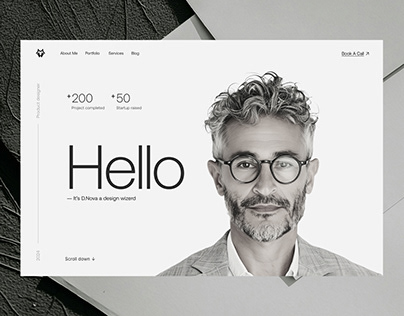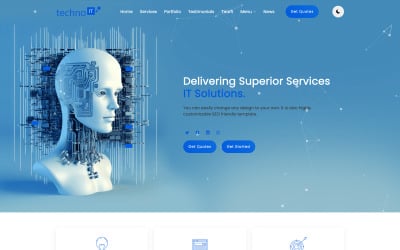Leading Tips for Producing an Impactful Web Site Layout That Transforms
To accomplish this, one should take into consideration a range of aspects, including understanding the target audience, focusing on user experience, and enhancing for mobile platforms. The tactical usage of compelling call-to-actions and a well-defined aesthetic hierarchy plays an essential duty in assisting customers with their journey.

Understand Your Target Market
Recognizing your target audience is fundamental to reliable web site design, as it lays the groundwork for creating an appealing customer experience. Identifying that your individuals are, including their demographics, choices, and behaviors, enables developers to tailor the website's content, layout, and performance to satisfy specific needs.
Conducting complete marketing research is important in this process. Surveys, interviews, and analytics can give valuable insights right into user expectations and discomfort points. By assembling this data, designers can create user characters that represent various sectors of the audience, guaranteeing that layout choices are informed and appropriate.
Additionally, comprehending the target audience helps in selecting suitable design components such as color design, typography, and images that reverberate with individuals. A site that speaks directly to its target market fosters a feeling of connection and trust fund, motivating longer visits and greater conversion rates.
Eventually, a user-centered method to website style not just improves user complete satisfaction but likewise supports organization objectives by driving interaction and loyalty. By focusing on the needs and preferences of the target market, a website can effectively serve its function and achieve desired outcomes.
Prioritize Customer Experience
To boost the overall efficiency of an internet site, prioritizing individual experience (UX) is essential (Website Design). A properly designed UX guarantees that site visitors can browse the website effortlessly, find details rapidly, and engage with material meaningfully. This causes boosted customer complete satisfaction and greater conversion prices
Begin by executing intuitive navigating. Menus needs to be practically structured, enabling customers to locate essential locations of the website with marginal effort. Consistency in layout components, such as color design and fonts, fosters experience, which is critical for keeping customer involvement.
In addition, take into consideration the filling rate of your web site. A delay of just a couple of secs can bring about significant drop-offs, as users are much less likely to await a slow-loading web page. Improving images and maximizing code can boost efficiency and keep visitors.
By focusing on customer experience, you not just create a much more pleasurable environment for site visitors but likewise strengthen your brand name's reliability. Inevitably, a focus on UX is an investment in the lasting success of your site.
Enhance for Mobile Tools
Optimizing for mobile gadgets is essential in today's electronic landscape, where a raising variety of users accessibility websites via smart devices and tablets. A mobile-friendly style not only boosts user experience yet also plays a considerable role in boosting internet search engine positions. To attain this, it is important to embrace a receptive layout that instantly changes to various screen sizes and orientations.

Packing rate is another crucial aspect; mobile users are usually less individual and expect rapid accessibility to details. By focusing on mobile optimization, you make certain that your web site remains affordable and successfully involves a broader audience.
Usage Engaging Call-to-Actions
A site's performance usually hinges on its capability to guide visitors towards wanted actions, making compelling call-to-actions (CTAs) important components of design. CTAs act as the crucial factors that direct individuals to involve with the site, whether that indicates making an acquisition, signing up for a newsletter, or downloading a source.
To produce reliable CTAs, clearness is vital. Usage concise language that plainly interacts the activity you want the customer to take. Phrases such as "Begin," "Subscribe Free," or "Shop Now" not only share necessity yet also get rid of ambiguity. The placement of CTAs is just as vital; they need to be purposefully placed throughout the web page to guarantee they are conveniently visible, particularly in high-traffic locations.
Additionally, the layout of CTAs should attract attention without being interfering. Use contrasting colors and clear fonts to ensure they capture interest. Additionally, take into consideration using directional signs, such as arrowheads or photos, home to lead customers towards these buttons. By focusing on these aspects, services can significantly boost user engagement, driving conversions and eventually attaining their internet site's objectives.
Concentrate On Visual Hierarchy
Efficient website style counts greatly on a well-structured visual hierarchy that guides individuals through web content seamlessly. By organizing elements in a manner that focuses on info, developers can improve customer experience and facilitate decision-making. This entails using dimension, shade, contrast, and spacing tactically to attract interest to the most vital components of a web page.
Using this contact form larger fonts for headings and subheadings establishes a clear difference between different areas, permitting individuals to check content easily. In addition, utilizing contrasting colors for buttons and calls-to-action can record individual attention and encourage interaction. Whitespace is an additional necessary part; it protects against clutter and makes it possible for customers to focus on essential messages without diversions.
Photos and graphics need to complement the text while also adhering to the well-known pecking order, reinforcing the total message (Website Design). Consistency in layout components, such as color design and typography, more strengthens the visual pecking order, making navigation user-friendly

Conclusion
To conclude, effective site design necessitates a thorough understanding of the target audience, prioritization of customer experience, and mobile optimization. The critical usage of compelling call-to-actions and a distinct aesthetic power structure additionally improves customer interaction. By implementing these concepts, internet sites can accomplish higher conversion rates, ensuring that design aspects not just attract site visitors yet likewise help with seamless navigating and communication. Inevitably, a well-executed website layout acts as a critical part in driving individual activities and achieving service goals.